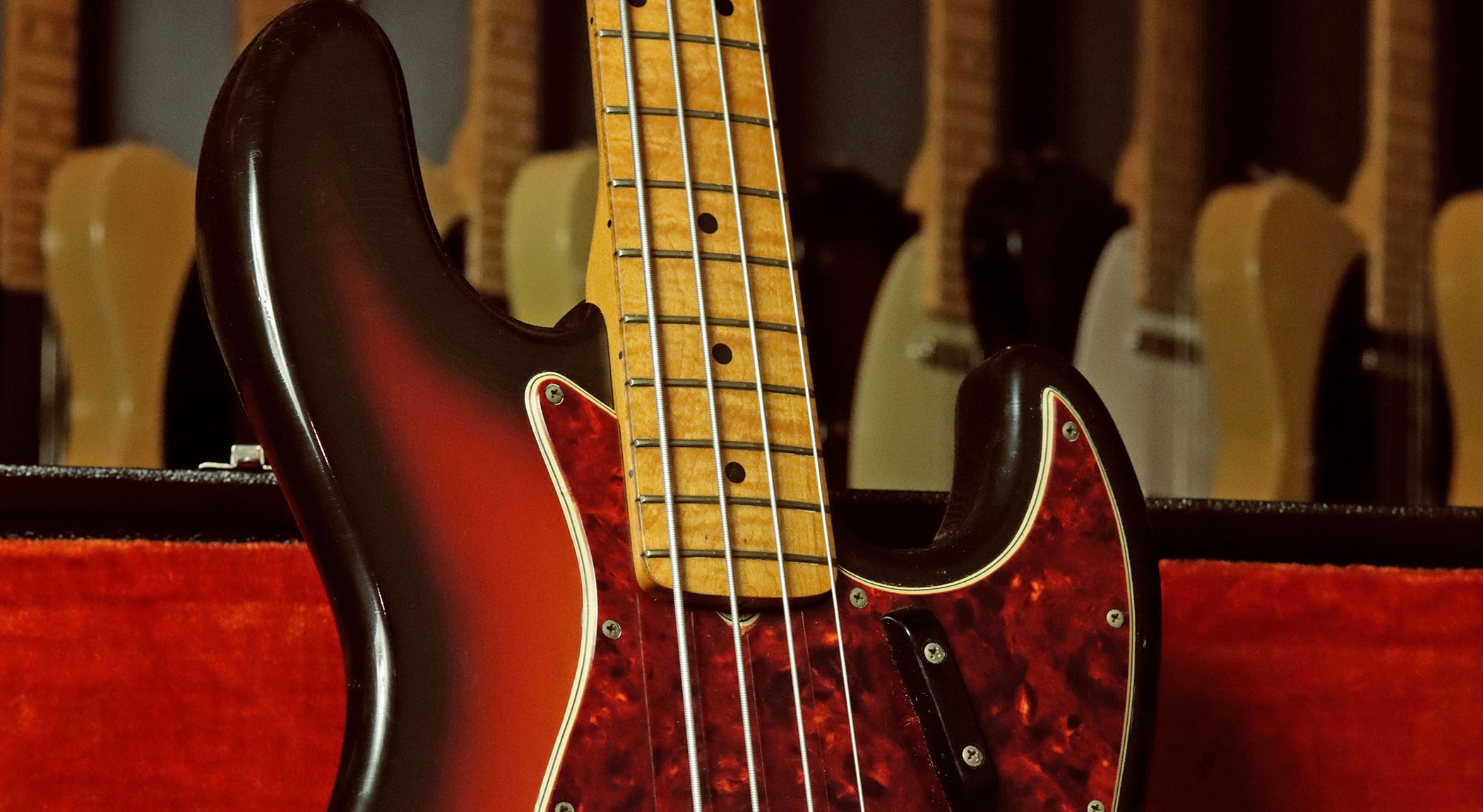
“They made them later on, but it’s not something I’ve ever seen this early. I can’t say for certain that it’s the only maple-cap Jazz Bass Fender made in 1965, but we have asked around online with all the guitar-based communities and so far nobody has reported seeing another one.
“It has a regular alder body construction and inside everything is as it should be. There’s a transition logo and the ‘A’ neck is on the narrow side, but it’s very well balanced and doesn’t dip at the headstock or lean into your body too much when you’re playing it on a strap. It’s in the mid-8lb range, so not super light or heavy by bass standards.
“I bought this from a dealer friend of mine last November and it’s funny how things go – because when we acquire the only example of something, I usually expect it to sell right away. It’s different with basses because a guitarist or guitar collector may have 10, 20 or even 100 guitars, but a bass player will usually just have their bass and most don’t collect.
“There’s always the hope that someone will want an instrument right away and sometimes I’ll know who will buy it as soon as I get it. But the weird thing about the guitar business is that you might have an instrument for over a year and nobody will call, and then the very next day three people will be fighting over it.”

“I don’t mind having oddball pieces sticking around for a while so long as there’s desirability. When I think about a Jazz Bass from the mid-1960s with a maple-cap neck, I know it’s a piece that will probably sell to a bass player who comes into the shop, tries it and finds it incredibly cool.
“I had three of the prototype maple-cap Strats that were made for a NAMM Show. I sold the Fiesta Red one, but I still have the Olympic White and Ocean Turquoise ones and, again, it takes a certain type of person to understand what they are and what makes them sound different.
“With a maple cap, the wood is a little harder so the sound is that bit brighter than a regular Jazz Bass with a rosewood fretboard. But if you take both versions from the same era and compare them side by side, you’ll find it’s a subtle difference. I think it stands out more on guitars because for some reason the sound seems to bounce off maple ’boards a little more. It could have something to do with the frequency range.”

“The maple-cap option goes back to Fender’s 1964 catalogue where they included a tiny little blip to announce that maple fretboards were available. It’s perhaps odd to think that they didn’t go back to making one-piece maple necks with a skunk stripe, but when you’re counting pennies it pays to have a separate ’board that you can attach to the stock production neck and decide on the spot whether it was going to be a maple or rosewood veneer.
“The earliest Fenders with maple caps I’ve seen are from October 1964 and they’re always guitars, rather than basses. These were probably prototypes, and maple-cap models went into production during 1965 with the most commonly ordered model being the Telecaster.
“Maybe Fender wanted to offer customers a choice and make people think of their best days in the 1950s. Nobody distinguished between one-piece and veneer necks, or concerned themselves with skunk stripes because those things were not considered important in those days.
“Fender always presented these options in a very low-key way in the catalogue, and it was just the same when they announced that custom colours were available in 1957. It was added in very small print in the corner of one page, almost as if they didn’t really want to fulfil custom orders.
“Custom colours only cost an additional five per cent, which was just pennies back then. Surely lots of players would have gladly paid five per cent more to have something cool and different when virtually every Telecaster was blonde and every Stratocaster was sunburst?
“Customers would have known if they read the catalogue very closely, but the only way they could get hold of one was to write to Fender and request a copy. It’s entirely possible that the scarcity of custom colours and the later maple caps is largely attributable to a simple lack of awareness among guitarists and poor advertising by Fender.”
- Vintage guitar veteran David Davidson owns Well Strung Guitars in Farmingdale, New York.







